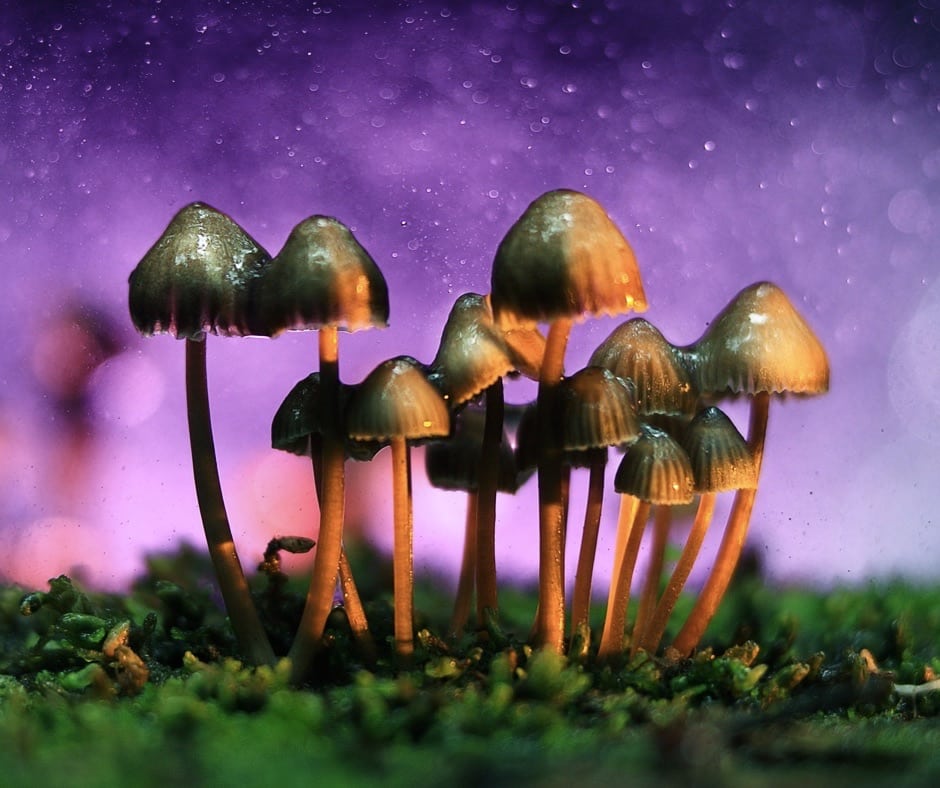The Fascinating History Of Psilocybin Mushrooms

What Are Psilocybin Mushrooms?
Psychedelic medicine have a fascinating history – and psilocybin mushrooms are no exception.
What are psilocybin mushrooms? They are a special type of mushrooms which contain particular chemical substances with psychoactive properties. More specifically, the substances called “psilocybin” and “psilocin” are the main chemical agents behind the psychoactive and psychedelic effects of these mushrooms.
See Top 10 Fascinating Facts About Psilocybin Mushrooms
There are more and more clinical studies proving that these “magic mushrooms” have healing properties in various psychiatric and physiological disorders, from OCD to depression and anxiety.
Are Psilocybin Mushrooms New?
Although the modern western civilization had a more solid contact with these mushrooms only in the 1950s, these special mushrooms were used for millennia by indigenous tribes all over the world.
The first evidence of magic mushroom use goes as far back as 10,000 BCE, where cave paintings in Australia suggest that mushroom-induced trances were a part of indigenous culture there. More rock paintings in Spain suggest that magic mushrooms were known to prehistoric people around 4,000 BCE in Europe.
Magic mushrooms were used frequently in the ancient cultures of Central and South America. In this part of the world, magic mushrooms were used in sacred religious and spiritual ceremonies – for healing, for divination and other purposes. Paintings and sculptures from Aztec and Mayan societies clearly show that magic mushrooms were an important part of their culture, as far back as 1,500 BCE.
When the Spanish conquered the Americas, things started to change – because rituals involving magic mushrooms were considered “satanic” or “barbaric” at best. Obviously, this was something intolerable for the Catholic church – especially because the sacrament in this religion was wine.
Hence, indigenous people started to hide their sacred rituals and slowly but surely, the use of psilocybin mushrooms became an underground practice of their culture. Thankfully, they have not disappeared completely, and are used by many indigenous groups in Mexico today.
The Connection Between Ancient Art & Mushrooms
Art depicting the use of sacred mushrooms is especially prevalent in Central America, with sculptures were dated as early as 1,000 BCE. The purpose of these holy artifacts is not certain for researchers, although it is clear that they hold a religious and sacred meaning to those who crafted them.
The word describing psilocybin mushrooms is “teonanacatl” in Central America. However, these were not the only sacred medicine which were used in religious and sacred ceremonies. The cactus peyote, as well as the morning glory seeds and Salvia divinorum were also used as entheogens and sacred medicine.
There was a god known in these cultures known as “Seven Flowers”. He was the Mixtec god of hallucination, especially when it comes to consuming psilocybin mushrooms. This god was also frequently depicted as carrying a pair of mushrooms in his hands. The Vienna Codex depicts 7 other gods with mushrooms in their hands, which marks the fact that psilocybin mushrooms were a powerful part of the Aztec culture.
A Spanish priest called Bernardino de Sahagun wrote, in the 16th century, about the use of psilocybin mushrooms by Aztecs in a book called “Florentine Codex”. Here is what he wrote…
“The first thing to be eaten at the feast were small black mushrooms that they called teonanacatl and bring on drunkenness, hallucinations and even lechery; they ate these before the dawn…with honey; and when they began to feel the effects, they began to dance, some sang and others wept… When the drunkenness of the mushrooms had passed, they spoke with one another of the visions they had seen.”
Fortunately, at the beginning of the 20th century the interest in magic mushrooms spiked once more. This is the time when Western culture got more familiarized with this sacred medicine.
How Magic Mushrooms Became Popular
Schultes and Reko, two ethnobotanists, discovered that morning glory seeds and psilocybin mushrooms were still used by local “doctors” in Mexico, although western medicine discovered that these plants had a depressive effect on the nervous system. These two ethnobotanists published their findings in Harvard University Botanical Museum Leaflets in the year 1939.
After hearing about their discoveries, two other men wanted to explore more about these mushrooms. Etnomycologists Wasson and Heim travelled to Central America to find out more about the use and effects of psilocybin mushrooms. The two ethnomycologists felt their powerful effects on their own skin, under the guidance of two local shamans, Don Aurelio and Maria Sabina.
These two brave men went on to publish their findings in “Life” magazine in the year of 1957. Their use of the term “magic mushrooms” became a cultural standard.
By 1960s, these mushrooms became a counterculture symbol, becoming widely used in the United States and United Kingdom. Psilocybin mushrooms had such a powerful impact on the American culture that it became a symbol of the hippie movement. Their use also inspired Albert Hofmann to synthesize LSD, another potent psychedelic which also became a counterculture symbol of the 1960s and ’70s.
Today, magic mushrooms are becoming more and more accepted and researched, in spite of their classification as a Class 1 drug (in the same category as heroin). Even the mass-media have started to publish mainstream articles about their benefits. (NY Times)
In the following years we can expect more and more clinical studies proving the healing and powerful spiritual effects of consuming psilocybin mushrooms.


Interested in reading more
The use of psilocybin mushrooms did not inspire Albert Hoffman to discover LSD, he had already done that in 1938. In 1958 Hoffman isolated psilocybin and psilocin from psilocybin mushroom to be synthetically produced for the Sandoz pharmaceutical company under the patented name Indocybin.
Also, Wasson was a rich banker, and from his ‘Magic Mushrooms’ publication in Life Magazine, many Westerners swarmed Oaxaca in search of Maria Sabina. Sabina’s village turned on her because of the unwanted visitors. Sabina ended up living and dying in poverty. The many westerners she helped did not help her when she was in need. Also, in 1974 the Mexican government criminalized psilocybin mushrooms in an attempt to disrupt the high volume of Westerners traveling to Oaxaca.
It is wonderful the mushrooms have been recognized in the US, especially now that they have become of therapeutic interest, but a lot of pain occurred in the process – an important thing to recognize.